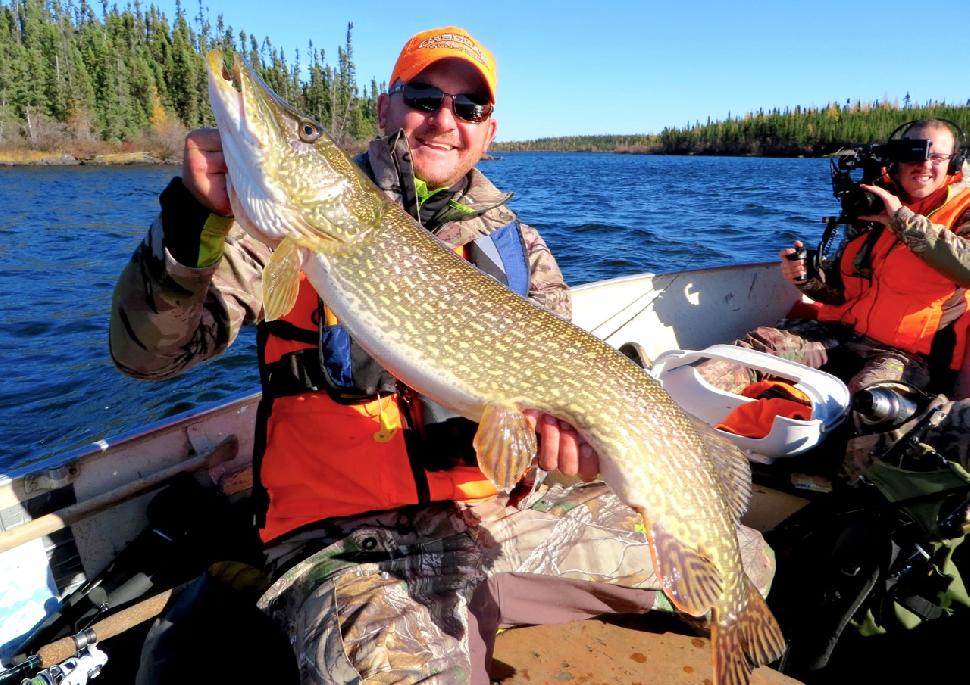A few days every spring, monster pike are accessible. Here's how to catch yours
Advertisement
I live for the end of winter, when warm spring days predominate, the ice begins honeycombing and the snow starts disappearing, leaving the lakes looking like giant parking lots. It’s not that I yearn for winter to leave as much as I long for the arrival of King Kong gators—giant northern pike weighing 25 to 35 pounds or more.
These are fish the size of which almost no one knows exist, accessible for only a few short days each spring. Indeed, I liken these humongous toothy critters to the giant phantom whitetails that no one sees for most of the year, save for a few days during the fall rut. That’s the only time the big bucks ever show themselves and remotely drop their guard.
With giant pike, the peak period takes place during the last two to three weeks of the ice-fishing season, when they gather in shallow, weedy bays preparing to spawn. Set the proper trap using large, fresh, dead baits attached to quick-strike rigs, and you’ll have all the odds stacked in your favour.
Advertisement
To make a quick-strike rig, attach a sturdy barrel swivel to one end of an 18- to 24-inch leader of either 27-pound-test Berkley 7 Strand wire or 50-pound-test Maxima fluorocarbon line. To the other end, add two #6 Gamakatsu treblehooks, tied in tandem and spaced two to three inches apart (I know that’s much closer than what most ice anglers are accustomed to, but as you’ll see, there’s a method to the madness). Now attach the barrel swivel on the leader to the snap on the end of a tip-up line.
For bait, use a foot-long, freshly thawed sucker, herring or, from a grocery store or fish market, mackerel (pictured). It’s crucial that you slide one tine from the top treblehook through the skin along the back of the bait at the base of the tail. Then slide a tine from the bottom treblehook under the skin around the bait’s dorsal fin. Both hooks should now be embedded in the back half of the bait.
As you slowly drop the quick-strike-rigged dead bait down the hole, pay careful attention to where you hang it. If you’re fishing in shallow water (10 feet deep or less), you’ll want to suspend it in the bottom half of the water column. If you’re fishing in water deeper than 10 feet, place the bait about three feet off the bottom, always keeping in mind that prowling pike like to silhouette their prey against a light backdrop. In this case, it’s the underside of the ice.
Advertisement
So, why is it necessary to place the two treblehooks relatively close to one another and stick them into the back half of the bait? When a pike inhales the vertically hanging baitfish, the front half of the bait will pivot and swing headfirst into the pike’s mouth, placing the two treblehooks in a perfect position to catch on its lips—not down its throat.
Set your tip-ups this way and you can sweep-set the hooks the instant you see a flag fly, confident you’ll hook every fish that hits. Indeed, my fishing buddies and I have recorded as many as 47 consecutive flags and hook-ups with every single pike perfectly hooked in the mouth and lip area, making it easy as pie to catch and release the fish of a lifetime. Again and again.
Advertisement

